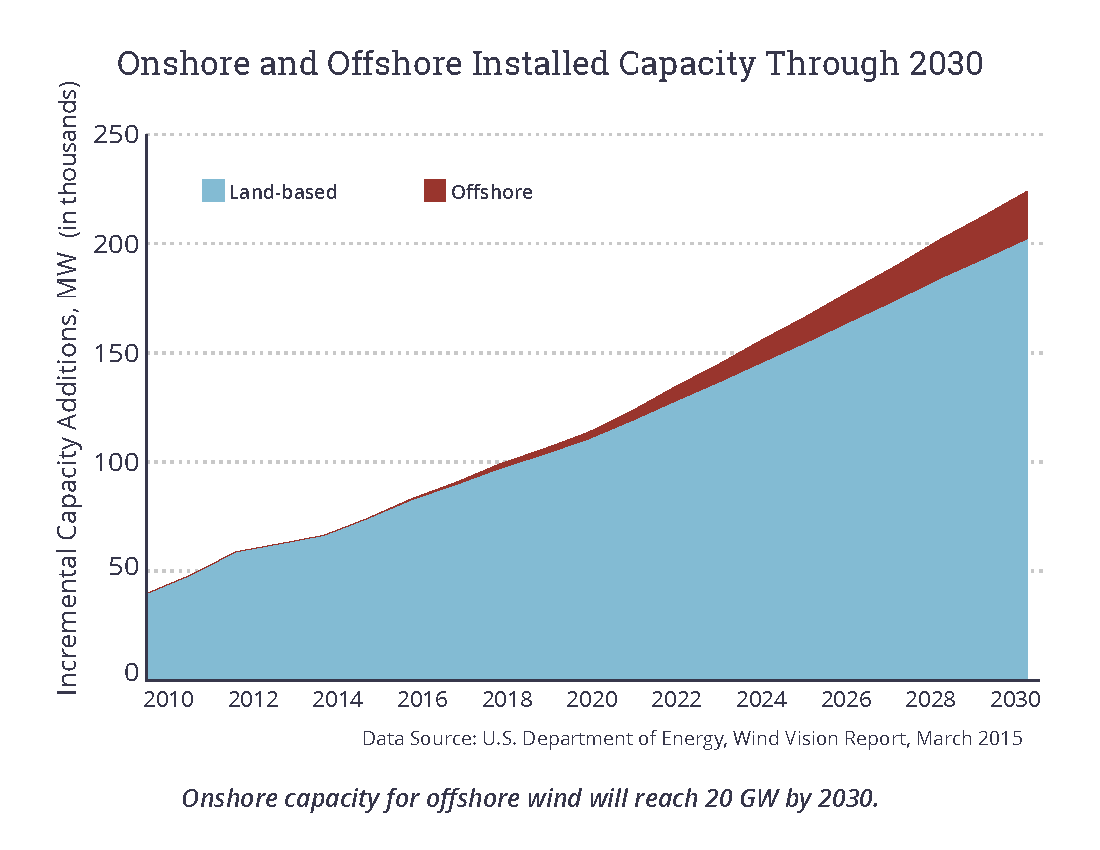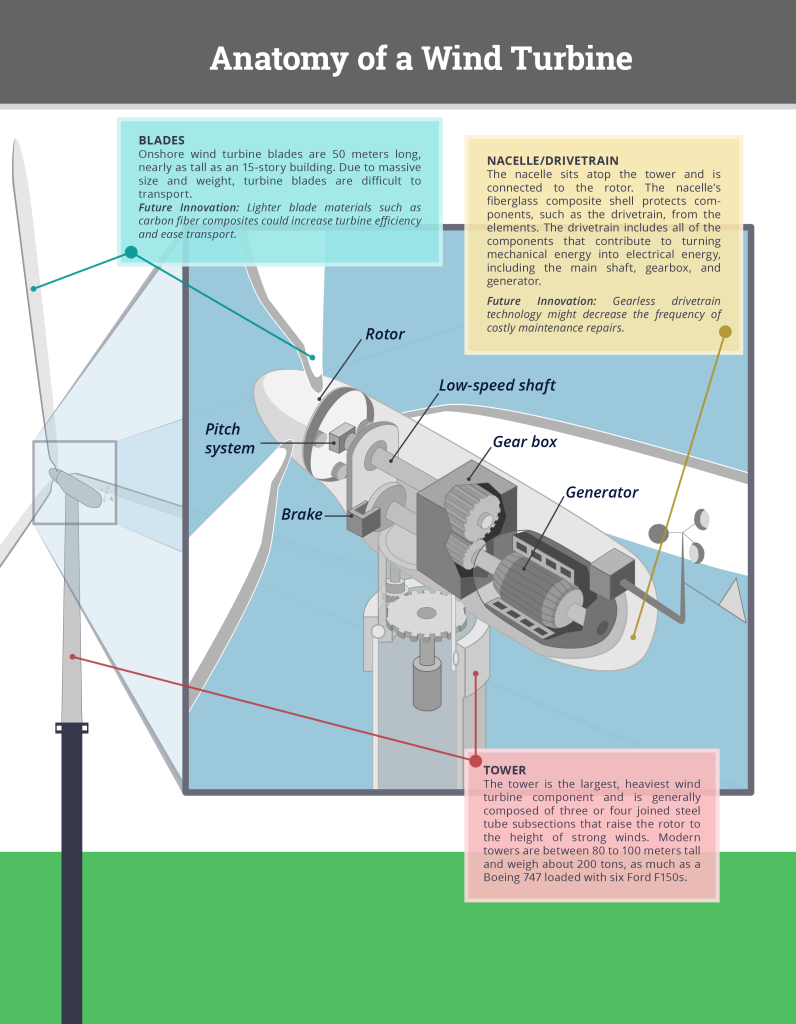How Does Wind Generate Electricity?
Wind is the movement of air from high pressure areas to low pressure areas. Most wind energy is captured using giant turbines nearly as tall as 20-story buildings, with blades 60 meters long. Wind passes over these blades, causing them to turn. The turning of the blades generates energy, which is converted to electricity by the drivetrain.
Types of Wind Turbines
Wind turbines fall under three major categories: offshore, onshore, and small-scale distributed.
Offshore wind turbines are the largest of the three types. They harness the wind that blows over oceans, which is typically stronger and more consistent than the onshore resource in the U.S. Using offshore wind turbines in the U.S. is highly practical because the majority of the population lives in coastal areas. The offshore turbines currently used are 6 megawatts (MW), or enough to power 1,500 U.S. households. Structurally, offshore wind turbines differ from onshore turbines only slightly--they require seafloor foundations and corrosion-resistant coatings.
Onshore wind turbines are smaller than offshore turbines due to the challenge of transporting large towers and blades along highways. Onshore wind farms are comprised of hundreds of wind turbines over an extensive area that often coexist with agriculture production, like grazing cattle. Large-scale onshore wind farms are generally connected to a utility-scale grid. The latest onshore turbines reach 2.5-3 MW, enough to power 750 U.S. households.
Distributed wind turbines are similar in design to utility-scale onshore turbines, but much smaller. They can range from small 5-kilowatt turbines to large multi-megawatt turbines and are usually installed in residential, agricultural or industrial areas. "Distributed" refers to being located at the site where energy will be consumed, and distributed systems are owned by individuals, cooperatives, or businesses.
Rising Demand Across the Globe
Falling costs and improved technology have fueled an average growth rate of 24 percent each year since 2000; global wind capacity has grown to a total of almost 370 gigawatts (GW), or enough to power about 150 million U.S. homes. The Global Wind Energy Council predicts wind capacity will grow to almost 1500 GW worldwide over the next 20 years, with almost 300 GW predicted to take place in North America.
Falling Costs of Wind-Generated Energy
Wind energy prices continue to decline and become increasingly competitive with traditional sources of energy. Most studies estimate a 20 percent to 30 percent fall in levelized cost of of onshore wind by 2030 compared to 2010 costs, and from 2008 to 2015, wind power costs fell by more than one-third. The majority of this cost decrease comes from technological improvements, improved siting decisions, and improvements in overall operations and maintenance of the turbines.
Manufacturing Wind Power
Wind turbines consist of thousands of components, ranging from large towers to smaller sensors that monitor wind speed and direction. Regardless if the component is large or small, each represents an opportunity for U.S. manufacturers to create good-paying jobs. The largest parts of the wind turbine are the blades and rotor, nacelle, and tower.
Career Opportunities in the Wind Power Sector
U.S. wind energy-related jobs are projected to increase 300 percent by 2030. Wind energy jobs are typically divided into three categories:
- Manufacturing: machinists, computer-controlled machine tool operators, assemblers, welders, quality-control inspectors, and industrial production manager
- Project development: land acquisition specialists, asset managers, and logistician
- Operations and maintenance
